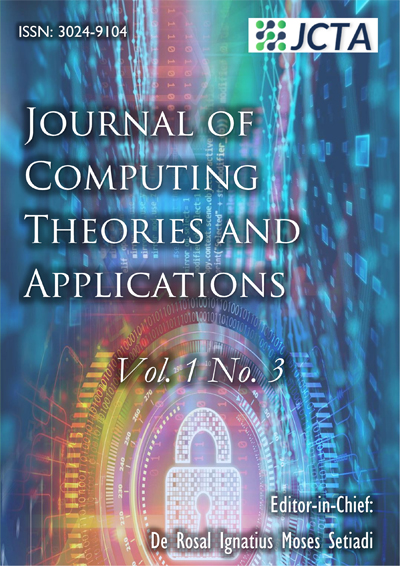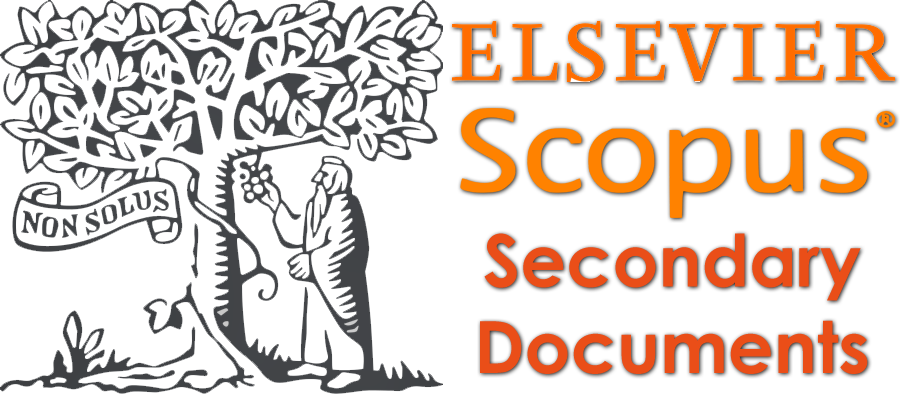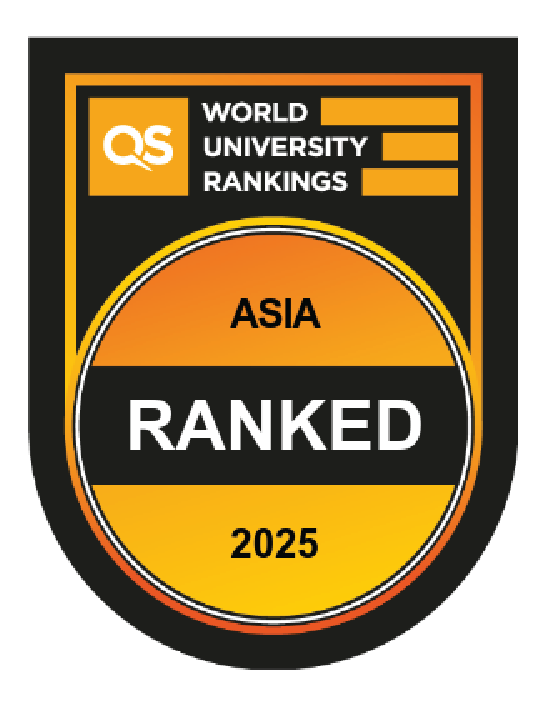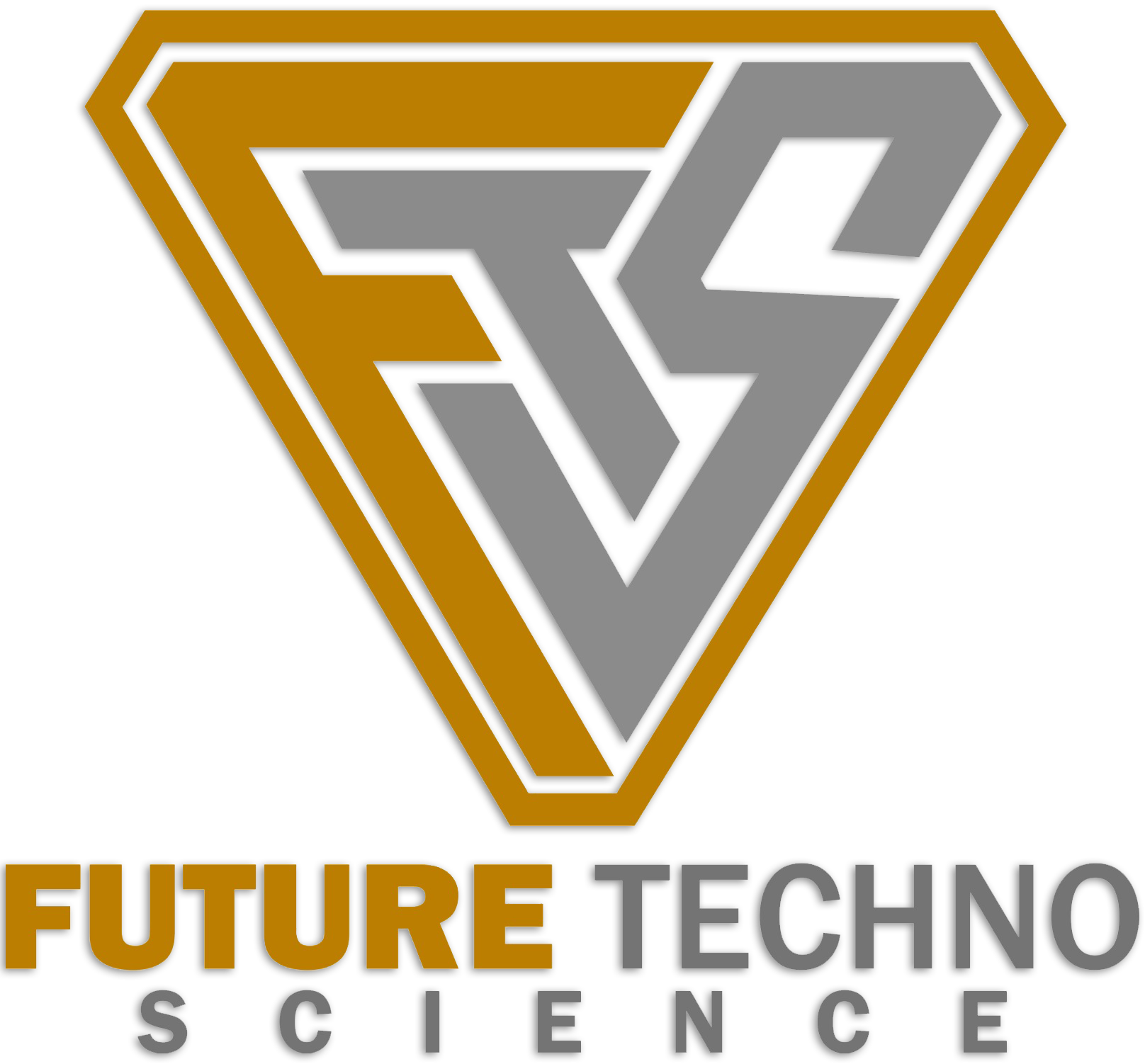Strategic Feature Selection for Enhanced Scorch Prediction in Flexible Polyurethane Form Manufacturing
DOI:
https://doi.org/10.62411/jcta.9539Keywords:
Feature selection, Foam production, Machine learning, Polyurethane, Scorch, XGBoostAbstract
The occurrence of scorch during the production of flexible polyurethane is a significant issue that negatively impacts foam products' resilience and generally jeopardizes their integrity. The likelihood of foam product failure can be decreased by optimizing production variables based on machine learning algorithms used to predict the occurrence of scorch. Investigating technology is required because prevention is the best approach to dealing with this problem. Hence, machine learning algorithms were trained to predict the occurrence of scorch using the thermodynamic profile of polyurethane foam, which is made up of recorded production variables. A variety of heuristics algorithms were trained and assessed for how well they performed, namely XGBoost, Decision trees, Random Forest, K-nearest neighbors, Naive Bayes, Support Vector Machines, and Logistic Regression. The XGboost ensemble was found to perform best. It outperformed others with an accuracy of 98.3% (i.e., 0.983), followed by logistic regression, decision tree, random forest, K-nearest neighbors, and naïve Bayes, yielding a training accuracy of 88.1%, 66.7%, 84.2%, 87.5%, and 67.5% respectively. The XGBoost was finally used, yielding 2-distinct cases of non(occurrence) of scorch. Ensemble demonstrates that it is quite capable and is an effective way to predict the occurrence of scorch.References
N. V. Gama, A. Ferreira, and A. Barros-Timmons, “Polyurethane foams: Past, present, and future,” Materials (Basel)., vol. 11, no. 10, 2018, doi: 10.3390/ma11101841.
J. K. Oladele et al., “BEHeDaS: A Blockchain Electronic Health Data System for Secure Medical Records Exchange,” J. Comput. Theor. Appl., vol. 2, no. 1, pp. 1–12, 2024, doi: 10.33633/jcta.v2i19509.
S.-X. Wang et al., “Inherently flame-retardant rigid polyurethane foams with excellent thermal insulation and mechanical properties,” Polymer (Guildf)., vol. 153, pp. 616–625, Sep. 2018, doi: 10.1016/j.polymer.2018.08.068.
A. A. Ojugo et al., “Dependable Community-Cloud Framework for Smartphones,” Am. J. Networks Commun., vol. 4, no. 4, p. 95, 2015, doi: 10.11648/j.ajnc.20150404.13.
R. Kumar and D. Kumar, “Hybrid Swarm Intelligence Energy Efficient Clustered Routing Algorithm for Wireless Sensor Net-works,” J. Sensors, vol. 2016, pp. 1–19, 2016, doi: 10.1155/2016/5836913.
S. Umar, G. O. Adejo, N. U. Imam, A. S. Zaharaddeen, Z. S. Abubakar, and A. Abdullahi, “Diet Fortification with Curcuma longa and Allium cepa Ameliorates 2 , 3 , 7 , 8-Tetracholorodibenzo- p-dioxin-induced Dyslipideamia and Oxidative Stress in Wistar Rats Length Article,” Niger. J. Basic Appl. Sci., vol. 30, no. 2, pp. 178–183, 2022, doi: 10.4314/njbas.v30i2.23.
S. Levchik, M. P. Luda, P. Bracco, P. Nada, and L. Costa, “Discoloration in fire-retardant flexible polyurethane foams,” J. Cell. Plast., vol. 41, no. 3, pp. 235–248, 2005, doi: 10.1177/0021955X05053523.
F. M. A. Hossain, Y. M. Zhang, and M. A. Tonima, “Forest fire flame and smoke detection from UAV-captured images using fire-specific color features and multi-color space local binary pattern,” J. Unmanned Veh. Syst., vol. 8, no. 4, pp. 285–309, Dec. 2020, doi: 10.1139/juvs-2020-0009.
Y. Nabata, A. Mamada, and H. Yamasaki, “Study of the curing process giving the rigid polyurethane foam by dynamic viscoelastic method,” J. Appl. Polym. Sci., vol. 35, no. 1, pp. 155–166, Jan. 1988, doi: 10.1002/app.1988.070350114.
M. J. Willis, C. Di Massimo, G. A. Montague, M. T. Tham, and A. J. Morris, “Artificial neural networks in process engineering,” IEE Proc. D Control Theory Appl., vol. 138, no. 3, p. 256, 1991, doi: 10.1049/ip-d.1991.0036.
A. A. Ojugo and E. O. Ekurume, “Deep Learning Network Anomaly-Based Intrusion Detection Ensemble For Predictive Intelli-gence To Curb Malicious Connections: An Empirical Evidence,” Int. J. Adv. Trends Comput. Sci. Eng., vol. 10, no. 3, pp. 2090–2102, Jun. 2021, doi: 10.30534/ijatcse/2021/851032021.
A. Okewale, F. Omoruwuo, and O. A. Adesina, “Comparative Studies of Response Surface Methodology (RSM) and Predictive Capacity of Artificial Neural Network (ANN) on Mild Steel Corrosion Inhibition using Water Hyacinth as an Inhibitor,” J. Phys. Conf. Ser., vol. 1378, no. 2, p. 022002, Dec. 2019, doi: 10.1088/1742-6596/1378/2/022002.
J. Demassa, “Polyol Stabilization and the Introduction of a New PUR Slabstock Foam Antioxidant,” Cell. Plast., vol. 41, no. De-cember, pp. 15–24, 2013.
F. Omoruwou, A. Okewale, and C. N. Owabor, “Statistical Analysis of Corrosion Inhibition of Water Hyacinth on Mild Steel in an Acidic Medium,” J. Environ. Anal. Toxicol., vol. 07, no. 04, 2017, doi: 10.4172/2161-0525.1000481.
A. Okewale and F. Omoruwuo, “Neem Leaf Extract as a Corrosion Inhibitor on Mild Steel in Acidic Solution,” Int. J. Eng. Res. Africa, vol. 35, pp. 208–220, Mar. 2018, doi: 10.4028/www.scientific.net/JERA.35.208.
A. A. Ojugo and O. D. Otakore, “Forging An Optimized Bayesian Network Model With Selected Parameters For Detection of The Coronavirus In Delta State of Nigeria,” J. Appl. Sci. Eng. Technol. Educ., vol. 3, no. 1, pp. 37–45, Apr. 2021, doi: 10.35877/454RI.asci2163.
F. O. Aghware, R. E. Yoro, P. O. Ejeh, C. C. Odiakaose, F. U. Emordi, and A. A. Ojugo, “DeLClustE: Protecting Users from Credit-Card Fraud Transaction via the Deep-Learning Cluster Ensemble,” Int. J. Adv. Comput. Sci. Appl., vol. 14, no. 6, pp. 94–100, 2023, doi: 10.14569/IJACSA.2023.0140610.
E. Omede, J. Anenechukwu, and C. Hampo, “Use of Adaptive Boosting Algorithm to Estimate User ’ s Trust in the Utilization o f Virtual Assistant Systems,” Int. J. Innov. Sci. Res. Technol., vol. 8, no. 1, pp. 502–509, 2023.
C. Bentéjac, A. Csörg?, and G. Martínez-Muñoz, “A Comparative Analysis of XGBoost,” no. February, 2019, doi: 10.1007/s10462-020-09896-5.
A. A. Ojugo and O. D. Otakore, “Computational solution of networks versus cluster grouping for social network contact recom-mender system,” Int. J. Informatics Commun. Technol., vol. 9, no. 3, p. 185, 2020, doi: 10.11591/ijict.v9i3.pp185-194.
M. I. Akazue, I. A. Debekeme, A. E. Edje, C. Asuai, and U. J. Osame, “UNMASKING FRAUDSTERS : Ensemble Features Se-lection to Enhance Random Forest Fraud Detection,” J. Comput. Theor. Appl., vol. 1, no. 2, pp. 201–212, 2023, doi: 10.33633/jcta.v1i2.9462.
A. R. Muslikh, I. D. R. M. Setiadi, and A. A. Ojugo, “Rice disease recognition using transfer xception convolution neural network,” J. Tek. Inform., vol. 4, no. 6, pp. 1541–1547, 2023, doi: 10.52436/1.jutif.2023.4.6.1529.
R. L. Gray and R. E. Lee, “Scorch inhibitors for flexible polyurethanes,” 1998, pp. 567–575. doi: 10.1007/978-94-011-5862-6_63.
K. Kometz, Branan’s Rules of Thumb for Chemical Engineers. Elsevier, 2012. doi: 10.1016/C2010-0-65782-8.
U. A. Amran et al., “Production of Rigid Polyurethane Foams Using Polyol from Liquefied Oil Palm Biomass: Variation of Isocy-anate Indexes,” Polymers (Basel)., vol. 13, no. 18, p. 3072, Sep. 2021, doi: 10.3390/polym13183072.
A. A. Ojugo and O. Nwankwo, “Spectral-Cluster Solution For Credit-Card Fraud Detection Using A Genetic Algorithm Trained Modular Deep Learning Neural Network,” JINAV J. Inf. Vis., vol. 2, no. 1, pp. 15–24, Jan. 2021, doi: 10.35877/454RI.jinav274.
M. Szycher, Szycher’s Handbook of Polyurethanes, no. December 2021. CRC Press, 2012. doi: 10.1201/b12343.
A. Di Ciaccio, “Categorical Encoding for Machine Learning Quantificazione delle variabili qualitative per il Machine Learning,” Chimcal Synth. Prod., vol. 36, no. 2, pp. 1048–1053, 2021.
A. A. Ojugo and O. D. Otakore, “Intelligent cluster connectionist recommender system using implicit graph friendship algorithm for social networks,” IAES Int. J. Artif. Intell., vol. 9, no. 3, p. 497~506, 2020, doi: 10.11591/ijai.v9.i3.pp497-506.
A. Kish and A. Kish, “Data in Brief Data Article Prediction models using machine learning,” Researchgate.Net?, no. April 2016, 2018, doi: 10.13140/RG.2.2.30481.68961.
I. Tubert-Brohman, W. Sherman, M. Repasky, and T. Beuming, “Improved docking of polypeptides with glide,” J. Chem. Inf. Model., vol. 53, no. 7, pp. 1689–1699, 2013, doi: 10.1021/ci400128m.
M. I. Akazue, R. E. Yoro, B. O. Malasowe, O. Nwankwo, and A. A. Ojugo, “Improved services traceability and management of a food value chain using block-chain network : a case of Nigeria,” Indones. J. Electr. Eng. Comput. Sci., vol. 29, no. 3, pp. 1623–1633, 2023, doi: 10.11591/ijeecs.v29.i3.pp1623-1633.
A. A. Ojugo and R. E. Yoro, “Extending the three-tier constructivist learning model for alternative delivery: ahead the COVID-19 pandemic in Nigeria,” Indones. J. Electr. Eng. Comput. Sci., vol. 21, no. 3, p. 1673, Mar. 2021, doi: 10.11591/ijeecs.v21.i3.pp1673-1682.
A. A. Ojugo and O. D. Otakore, “Improved Early Detection of Gestational Diabetes via Intelligent Classification Models: A Case of the Niger Delta Region in Nigeria,” J. Comput. Sci. Appl., vol. 6, no. 2, pp. 82–90, 2018, doi: 10.12691/jcsa-6-2-5.
A. S. Pillai, “Multi-Label Chest X-Ray Classification via Deep Learning,” J. Intell. Learn. Syst. Appl., vol. 14, pp. 43–56, 2022, doi: 10.4236/jilsa.2022.144004.
D. S. Charan, H. Nadipineni, S. Sahayam, and U. Jayaraman, “Method to Classify Skin Lesions using Dermoscopic images,” Aug. 2020, [Online]. Available: http://arxiv.org/abs/2008.09418
A. E. Ibor, E. B. Edim, and A. A. Ojugo, “Secure Health Information System with Blockchain Technology,” J. Niger. Soc. Phys. Sci., vol. 5, no. 992, pp. 1–8, 2023, doi: 10.46481/jnsps.2022.992.
O. V. Lee et al., “A malicious URLs detection system using optimization and machine learning classifiers,” Indones. J. Electr. Eng. Comput. Sci., vol. 17, no. 3, p. 1210, Mar. 2020, doi: 10.11591/ijeecs.v17.i3.pp1210-1214.
M. Rathi and V. Pareek, “Spam Mail Detection through Data Mining – A Comparative Performance Analysis,” Int. J. Mod. Educ. Comput. Sci., vol. 5, no. 12, pp. 31–39, 2013, doi: 10.5815/ijmecs.2013.12.05.
R. A. Hasan, M. M. Akawee, and T. Sutikno, “Improved GIS-T model for finding the shortest paths in graphs,” Babylonian J. Mach. Learn., vol. 2023, pp. 17–26, 2023, doi: 10.58496/BJML/2023/002.
R. Nasir, M. Afzal, R. Latif, and W. Iqbal, “Behavioral Based Insider Threat Detection Using Deep Learning,” IEEE Access, vol. 9, pp. 143266–143274, 2021, doi: 10.1109/ACCESS.2021.3118297.
X. Ying, “An Overview of Overfitting and its Solutions,” J. Phys. Conf. Ser., vol. 1168, no. 2, 2019, doi: 10.1088/1742-6596/1168/2/022022.
O. D. Voke, M. I. Akazue, E. U. Omede, E. . Oboh, and A. . Imianvan, “Survival Prediction of Cervical Cancer Patients using Genetic Algorithm-Based Data Value Metric and Recurrent Neural Network,” Int. J. Soft Comput. Eng., vol. 13, no. 2, pp. 29–41, May 2023, doi: 10.35940/ijsce.B3608.0513223.
A. A. Ojugo and A. O. Eboka, “Empirical Bayesian network to improve service delivery and performance dependability on a campus network,” IAES Int. J. Artif. Intell., vol. 10, no. 3, p. 623, Sep. 2021, doi: 10.11591/ijai.v10.i3.pp623-635.
G. Behboud, “Reasoning using Modular Neural Network,” Towar. Data Sci., vol. 34, no. 2, pp. 12–34, 2020.
A. A. Ojugo and A. O. Eboka, “Assessing Users Satisfaction and Experience on Academic Websites: A Case of Selected Nigerian Universities Websites,” Int. J. Inf. Technol. Comput. Sci., vol. 10, no. 10, pp. 53–61, 2018, doi: 10.5815/ijitcs.2018.10.07.
W. W. Guo and H. Xue, “Crop Yield Forecasting Using Artificial Neural Networks: A Comparison between Spatial and Temporal Models,” Math. Probl. Eng., vol. 20, no. 4, pp. 1–7, 2014, doi: 10.1155/2014/857865.
A. A. Ojugo and D. A. Oyemade, “Predicting Diffusion Dynamics Of The Coronavirus In Nigeria Through Ties-Strength Threshold On A Cascading SI-Graph,” Technol. Reports Kansai Univ., vol. 62, no. 08, pp. 126–132, 2020, doi: TRKU-13-08-2020-10998.
K. Kakhi, R. Alizadehsani, H. M. D. Kabir, A. Khosravi, S. Nahavandi, and U. R. Acharya, “The internet of medical things and artificial intelligence: trends, challenges, and opportunities,” Biocybern. Biomed. Eng., vol. 42, no. 3, pp. 749–771, 2022, doi: 10.1016/j.bbe.2022.05.008.
H. Said, B. B. S. Tawfik, and M. A. Makhlouf, “A Deep Learning Approach for Sentiment Classification of COVID-19 Vaccination Tweets,” Int. J. Adv. Comput. Sci. Appl., vol. 14, no. 4, pp. 530–538, 2023, doi: 10.14569/IJACSA.2023.0140458.
A. Taravat and F. Del Frate, “Weibull Multiplicative Model and Machine Learning Models for Full-Automatic Dark-Spot Detection From Sar Images,” Int. Arch. Photogramm. Remote Sens. Spat. Inf. Sci., vol. XL-1/W3, no. September 2013, pp. 421–424, 2013, doi: 10.5194/isprsarchives-xl-1-w3-421-2013.
P. . Maya Gopal and Bhargavi R, “Feature Selection for Yield Prediction Using BORUTA Algorithm,” Int. J. Pure Appl. Math., vol. 118, no. 22, pp. 139–144, 2018.
Maya Gopal P S and Bhargavi R, “Selection of Important Features for Optimizing Crop Yield Prediction,” Int. J. Agric. Environ. Inf. Syst., vol. 10, no. 3, pp. 54–71, Jul. 2019, doi: 10.4018/IJAEIS.2019070104.
D. A. Al-Qudah, A. M. Al-Zoubi, P. A. Castillo-Valdivieso, and H. Faris, “Sentiment analysis for e-payment service providers using evolutionary extreme gradient boosting,” IEEE Access, vol. 8, pp. 189930–189944, 2020, doi: 10.1109/ACCESS.2020.3032216.
M. S. Sunarjo, H.-S. Gan, and D. R. I. M. Setiadi, “High-Performance Convolutional Neural Network Model to Identify COVID-19 in Medical Images,” J. Comput. Theor. Appl., vol. 1, no. 1, pp. 19–30, 2023, doi: 10.33633/jcta.v1i1.8936.
A. A. Ojugo and E. O. Ekurume, “Predictive Intelligent Decision Support Model in Forecasting of the Diabetes Pandemic Using a Reinforcement Deep Learning Approach,” Int. J. Educ. Manag. Eng., vol. 11, no. 2, pp. 40–48, Apr. 2021, doi: 10.5815/ijeme.2021.02.05.
E. . Ihama, M. I. Akazue, E. U. Omede, and D. V. Ojie, “A Framework for Smart City Model Enabled by Internet of Things (IoT),” Int. J. Comput. Appl., vol. 185, no. 6, pp. 6–11, 2023, doi: 10.5120/ijca2023922685.
R. G. Bhati, “A Survey on Sentiment Analysis Algorithms and Datasets,” Rev. Comput. Eng. Res., vol. 6, no. 2, pp. 84–91, 2019, doi: 10.18488/journal.76.2019.62.84.91.
S. Paliwal, A. K. Mishra, R. K. Mishra, N. Nawaz, and M. Senthilkumar, “XGBRS Framework Integrated with Word2Vec Sentiment Analysis for Augmented Drug Recommendation,” Comput. Mater. Contin., vol. 72, no. 3, pp. 5345–5362, 2022, doi: 10.32604/cmc.2022.025858.
S. . Okperigho, B. Nwozor, and V. . Geteloma, “Deployment of an IoT Storage Tank Gauge and Monitor,” FUPRE J. Sci. Ind. Res., vol. 8, no. 1, pp. 55–68, 2024.
Rukshan Pramoditha, “k-fold cross-validation explained in plain English,” Towar. Data Sci., no. December 2020, 2020.
J. Camargo and A. Young, “Feature Selection and Non-Linear Classifiers: Effects on Simultaneous Motion Recognition in Upper Limb,” IEEE Trans. Neural Syst. Rehabil. Eng., vol. 27, no. 4, pp. 743–750, Apr. 2019, doi: 10.1109/TNSRE.2019.2903986.
A. A. Ojugo and A. O. Eboka, “An Empirical Evaluation On Comparative Machine Learning Techniques For Detection of The Distributed Denial of Service (DDoS) Attacks,” J. Appl. Sci. Eng. Technol. Educ., vol. 2, no. 1, pp. 18–27, 2020, doi: 10.35877/454ri.asci2192.
Z. Karimi, M. Mansour Riahi Kashani, and A. Harounabadi, “Feature Ranking in Intrusion Detection Dataset using Combination of Filtering Methods,” Int. J. Comput. Appl., vol. 78, no. 4, pp. 21–27, Sep. 2013, doi: 10.5120/13478-1164.
M. Mayo, “Dataset Splitting,” KD Nuggets, p. 1, 2020.
S. Badillo et al., “An Introduction to Machine Learning,” Clin. Pharmacol. Ther., vol. 107, no. 4, pp. 871–885, Apr. 2020, doi: 10.1002/cpt.1796.
S. Consoli, P. Pizziolo, and G. F. Martinis, “The Effect of Atmospheric Humidity on the Production of Flexible Slabstock Polyu-rethane Foams,” J. Cell. Plast., vol. 22, no. 5, pp. 415–430, 1986, doi: 10.1177/0021955X8602200504.
R. E. Yoro, F. O. Aghware, M. I. Akazue, A. E. Ibor, and A. A. Ojugo, “Evidence of personality traits on phishing attack menace among selected university undergraduates in Nigerian,” Int. J. Electr. Comput. Eng., vol. 13, no. 2, p. 1943, Apr. 2023, doi: 10.11591/ijece.v13i2.pp1943-1953.
I. P. Okobah and A. A. Ojugo, “Evolutionary Memetic Models for Malware Intrusion Detection: A Comparative Quest for Com-putational Solution and Convergence,” Int. J. Comput. Appl., vol. 179, no. 39, pp. 34–43, 2018, doi: 10.5120/ijca2018916586.
F. U. Emordi, C. C. Odiakaose, P. O. Ejeh, O. Attoh, and N. C. Ashioba, “Student’s Perception and Assessment of the Dennis Osadebay University Asaba Website for Academic Information Retrieval, Improved Web Presence, Footprints and Usability,” FUPRE J. Sci. Ind. Res., vol. 7, no. 3, pp. 49–60, 2023.
A. A. Ojugo and R. E. Yoro, “Predicting Futures Price And Contract Portfolios Using The ARIMA Model: A Case of Nigeria’s Bonny Light and Forcados,” Quant. Econ. Manag. Stud., vol. 1, no. 4, pp. 237–248, 2020, doi: 10.35877/454ri.qems139.
A. Jadon, M. Omama, A. Varshney, M. S. Ansari, and R. Sharma, “FireNet: A Specialized Lightweight Fire & Smoke Detection Model for Real-Time IoT Applications,” May 2019, [Online]. Available: http://arxiv.org/abs/1905.11922
G. TekalignTujo, G. Dileep Kumar, D. ElifeneshYitagesu, and B. MeseretGirma, “Predictive Model to Predict Seed Classes using Machine Learning,” Int. J. Eng. Res. & Technol., vol. 6, no. 08, pp. 334–344, 2017.
S. Liu, T. Bi, A. Xue, and Q. Yang, “Fault analysis of different kinds of distributed generators,” in 2011 IEEE Power and Energy Society General Meeting, IEEE, Jul. 2011, pp. 1–6. doi: 10.1109/PES.2011.6039596.
Q. Li et al., “An Enhanced Grey Wolf Optimization Based Feature Selection Wrapped Kernel Extreme Learning Machine for Medical Diagnosis,” Comput. Math. Methods Med., vol. 2017, pp. 1–15, 2017, doi: 10.1155/2017/9512741.
E. Yakub, S. E. Agarry, F. Omoruwou, and C. N. Owabor, “Comparative study of the batch adsorption kinetics and mass transfer in phenol-sand and phenol-clay adsorption systems,” Part. Sci. Technol., vol. 38, no. 7, pp. 801–811, Oct. 2020, doi: 10.1080/02726351.2019.1616862.
A. A. Ojugo, M. I. Akazue, P. O. Ejeh, C. Odiakaose, and F. U. Emordi, “DeGATraMoNN: Deep Learning Memetic Ensemble to Detect Spam Threats via a Content-Based Processing,” Kongzhi yu Juece/Control Decis., vol. 38, no. 01, pp. 667–678, 2023.
A. A. Ojugo et al., “Forging a learner-centric blended-learning framework via an adaptive content-based architecture,” Sci. Inf. Technol. Lett., vol. 4, no. 1, pp. 40–53, May 2023, doi: 10.31763/sitech.v4i1.1186.
I. Tonyloi, “Building Machine Learning Models Machine Learning Models View project,” no. March, 2017.
A. Törnqvist, “Interactive visualization of taxi data using heatmaps Interactive visualization of taxi data using heatmaps Exa-mensarbete utfört i Medieteknik,” 2016.
O. S. Durowoju, A. O. Olusola, and B. W. Anibaba, “Rainfall – Runoff Relationship and its Implications on Lagos Metropolis,” Ife Res. Publ. Geogr., vol. 16, no. 1, pp. 25–33, 2018.
T. F. Balogun, “Utility of Microwave and Optical Remote Sensing in Oil Spill Detection in the Mangrove Region of Nigeria,” J. Geosci. Environ. Prot., vol. 03, no. 01, pp. 16–21, 2015, doi: 10.4236/gep.2015.31003.
A. Taravat and F. Del Frate, “Development of band ratioing algorithms and neural networks to detection of oil spills using Landsat ETM+ data,” EURASIP J. Adv. Signal Process., vol. 2012, no. 1, 2012, doi: 10.1186/1687-6180-2012-107.
A. Jovi?, K. Brki?, and N. Bogunovi?, “A review of feature selection methods with applications,” 2015 38th Int. Conv. Inf. Commun. Technol. Electron. Microelectron. MIPRO 2015 - Proc., pp. 1200–1205, 2015, doi: 10.1109/MIPRO.2015.7160458.
Y. Kim, W. N. Street, and F. Menczer, “Feature selection in data mining,” ICMLCA 2021 - 2nd Int. Conf. Mach. Learn. Comput. Appl., vol. 16, pp. 1–22, 2002, [Online]. Available: papers2://publication/uuid/044E95F1-AAFB-4D03-8E90-536C09353C85
C. L. Udeze, I. E. Eteng, and A. E. Ibor, “Application of Machine Learning and Resampling Techniques to Credit Card Fraud Detection,” J. Niger. Soc. Phys. Sci., vol. 12, p. 769, Aug. 2022, doi: 10.46481/jnsps.2022.769.
M. I. Akazue, A. A. Ojugo, R. E. Yoro, B. O. Malasowe, and O. Nwankwo, “Empirical evidence of phishing menace among un-dergraduate smartphone users in selected universities in Nigeria,” Indones. J. Electr. Eng. Comput. Sci., vol. 28, no. 3, pp. 1756–1765, Dec. 2022, doi: 10.11591/ijeecs.v28.i3.pp1756-1765.
R. E. Yoro, F. O. Aghware, B. O. Malasowe, O. Nwankwo, and A. A. Ojugo, “Assessing contributor features to phishing suscepti-bility amongst students of petroleum resources varsity in Nigeria,” Int. J. Electr. Comput. Eng., vol. 13, no. 2, p. 1922, Apr. 2023, doi: 10.11591/ijece.v13i2.pp1922-1931.
Y. Bouchlaghem, Y. Akhiat, and S. Amjad, “Feature Selection: A Review and Comparative Study,” E3S Web Conf., vol. 351, pp. 1–6, 2022, doi: 10.1051/e3sconf/202235101046.
C. Shorten and T. M. Khoshgoftaar, “A survey on Image Data Augmentation for Deep Learning,” J. Big Data, vol. 6, no. 1, 2019, doi: 10.1186/s40537-019-0197-0.
S. Wang, J. Tang, H. Liu, and E. Lansing, “Encyclopedia of Machine Learning and Data Science,” Encycl. Mach. Learn. Data Sci., no. October 2017, pp. 1–9, 2020, doi: 10.1007/978-1-4899-7502-7.
J. Li et al., “Feature selection: A data perspective,” ACM Comput. Surv., vol. 50, no. 6, 2017, doi: 10.1145/3136625.
G. C. Okafor and K. N. Ogbu, “Assessment of the impact of climate change on the freshwater availability of Kaduna River basin, Nigeria,” J. Water L. Dev., vol. 38, no. 1, pp. 105–114, Sep. 2018, doi: 10.2478/jwld-2018-0047.
M. Armstrong and J. Vickers, “Patterns of Price Competition and the Structure of Consumer Choice,” MPRA Pap., vol. 1, no. 98346, pp. 1–40, 2020.
R. Braddock and C. Chambers, “Tank gauging systems used for bulk storage of gasoline,” Inst. Chem. Eng. Symp. Ser., no. 156, pp. 553–559, 2011.
Downloads
Published
How to Cite
Issue
Section
License
Copyright (c) 2024 Arnold Adimabua Ojugo, Felix Omoruwou, Solomon Ebuka Ilodigwe

This work is licensed under a Creative Commons Attribution 4.0 International License.















